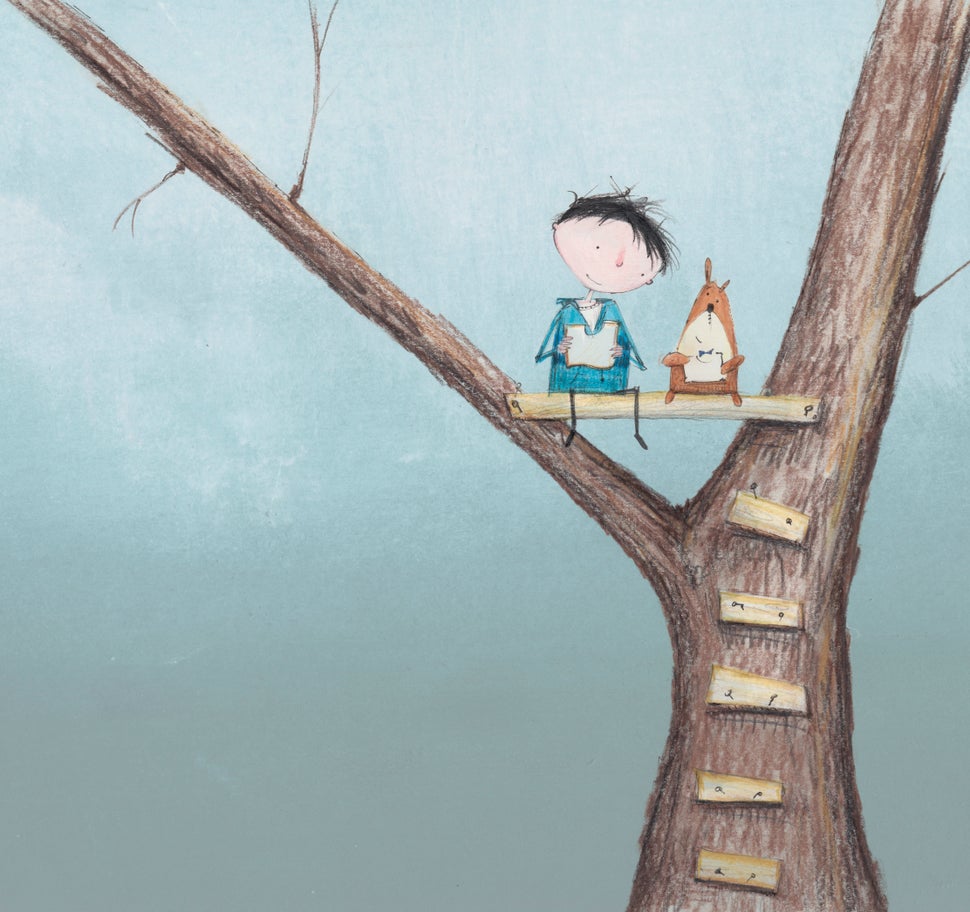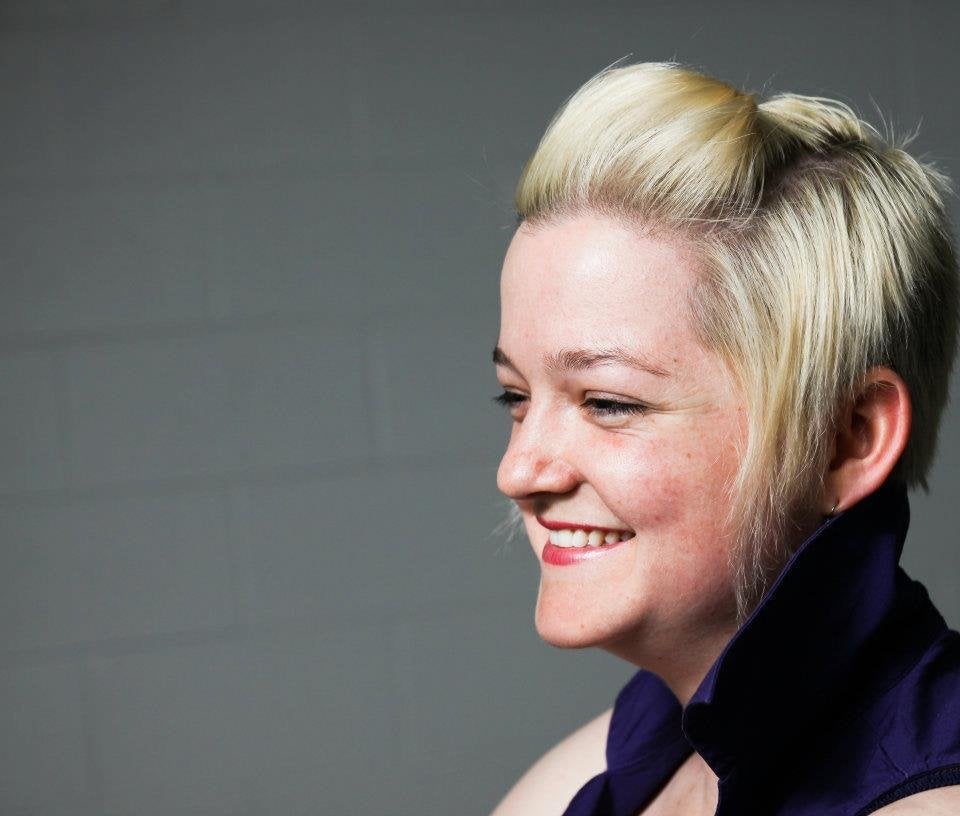When Jessica Walton's wife fell pregnant, she made it her mission to find books with diverse characters and storylines to teach her new arrival about the world.
As a queer amputee Walton had spent her life searching - sometimes deliberately, often subconsciously - for books that represented her.
But when her father came out as transgender five years ago and she found out her and her wife were expecting, she found a severe lack of books for young children about the trans experience - so she decided to create her own.
"I channeled my ambition to be a writer into this gap in picture books," she told The Huffington Post UK. "I figured that if I couldn’t find the right thing, I would have to have a go myself."
‘Introducing Teddy’ is a charming story about being true to yourself, featuring a transgender teddy bear who transitions from male to female.

The picture book - dedicated to Walton's father, Tina, and her son, Errol - is simple in plot: "I really was writing for a one-year-old."
The book begins with the main characters, Errol and his Teddy bear Thomas, taking part in a handful of different activities such as riding bikes and playing on swings together.
Before long, Thomas grows distant and tells Errol that he's always secretly known he was a girl teddy and wants to be called Tilly.
Errol accepts this decision, unfazed, and the pair continue playing together, as they had before.
"I wanted to show that Tilly has transitioned but nothing has changed," Walton said.
For a simple visual clue, Tilly removes her bowtie and puts it in her hair.
Walton told HuffPost UK that she was keen to avoid gender stereotyping and mindful not to put too much emphasis on appearance. So when Tilly puts the bow in her hair, a girl character in the book, named Ava, decides to remove her own bow completely.
"We wanted to send the message that people can and should wear whatever they like. We should wear what makes us happy," said Walton.
This is remarkably similar to her own acceptance of her father's transition, which she admits was difficult to adjust to early on.
"In the end you realise that relationship with your parent isn’t based on what they wear or how they look or what their name is - but it’s based on love and history and all of the care they’ve given over the years. That is so much stronger than identity.”

Originally self-published after crowdfunding on Kickstarter, the publication rights for 'Introducing Teddy' are now being snapped up all over the world. Its success is proof of the demand for greater diversity in children's books.
Not only is it important that children have access to books that reflect their own background, but literature provides the perfect opportunity to teach them about the wider world.
"We know that what young people see and hear in the media helps them to figure out how the world works, and who and what is valued in our society," Nick Harrop, campaigns manager at YoungMinds, told HuffPost UK.
"If children do not find their own looks or abilities reflected in the media as they grow up, it can affect their self-esteem, self-worth, and sense of pride about who they are."
Walton knows the profound impact of seeing yourself in the media first-hand.
“Real-life diversity isn’t reflected in the books on our shelves. When your own story doesn't exist it sends a powerful message about your place in the real world," she said. "And as someone who is queer and disabled, I know how amazing it is when I do see myself in a book."

BJ Epstein, a lecturer in literature at University of East Anglia, has actively sought out books for her daughter that reflect their "two-mum family". She also believes all children will benefit from being exposed to a mix of different backgrounds through literature.
"For kids who don't have two mums, it's only beneficial for them to read about other family set-ups; if they know it's perfectly normal to have two mums, they are less likely to tease or bully someone from a different sort of family than their own," she told HuffPost UK.
"Children are already quite open; it's adults who are always trying to protect them and to keep information from them."
Walton initially envisioned 'Introducing Teddy' as a book for those with a trans family member or indeed trans children themselves, but after setting up her Kickstarter - which raised more than double its $10,500AUS target - she realised the potential readership was far greater than the trans community alone.
"Suddenly, I realised that people who didn’t even know many trans people still wanted to read the book," she said. "It was all very unexpected and wonderful."
So if the demand is so great, why are we still playing catch-up?
Diana Gerald, CEO of the Book Trust, the largest reading charity in the UK, said: "The publishing industry are certainly more aware of the need of diversity in children’s books and we are seeing a lot more diverse characters in stories than 50 years ago."
She believes that there is far more that needs to be done, not only to ensure more books are published, but to drive access and awareness to a range of books.
Schools provide children with a wide-range of books, but not all schoolchildren will have equal access to diverse books.
While the Department of Education recommends that schools "encourage children to read widely" and supports school libraries, it does not set reading lists. By GCSE and A-Level, the curriculum sets broad expectations, including periods and genres, and then awarding bodies submit specific texts for approval.
A spokesperson for the Department of Education told HuffPost UK: “We want children to develop a love of all books and the national curriculum is clear that schools should encourage children to read widely.
"We don’t prescribe a reading list for schools as we believe teachers are best placed to choose the books and poems that will inspire their pupils.”
For Gerald, the recommendations are too vague.
"Schools are expected to provide library facilities, promote wider reading and ‘set ambitious reading expectations’ for students outside of school, with no guidance as to what this looks like or how it can be achieved," she said.
"Independent choice and reading widely are referred to in the framework and curricula, but seem at odds with the very clear message that English-borne literature and classics are heavily favoured."
While Gerald describes classics as "wonderful books" she does not think they are always suitable, particularly for reluctant readers.
"If we want children to develop a love of reading, we need to make reading as accessible, relevant, exciting and fun as possible."
Thankfully there are plenty of fantastic resources to help parents, teachers or anyone looking to provide a child with more diverse reading material.
Little Parachutes provides a unique and simple way to search for picture books that address situations and issues that young children experience. Each entry in the database is tagged, so browsing the library one can easily find books addressing subjects such as sharing, moving house and visiting the doctor. It also includes more challenging situations such as bereavement, adoption, divorce and serious illness in the family.
Letterbox Library is a database of multicultural, gender equality and special issue books for children. The founders say that many users come to the site to find books that are "incidentally inclusive", meaning that the diversity does not form a major part of the plot, rather that a character might have a disability, for example.
Book Trust offers a variety of inclusive resources: the Bookmark section is for anyone seeking information, books or advice relating to disability and children's books, it also includes a Bookmark book of the month; the Book Finder tool features inclusive booklists; and the charity also offers advice for writers on how to include more positive material in children's books, and making books as genuinely inclusive as possible.
'Introducing Teddy' is published in the UK by Bloomsbury in June 2016.